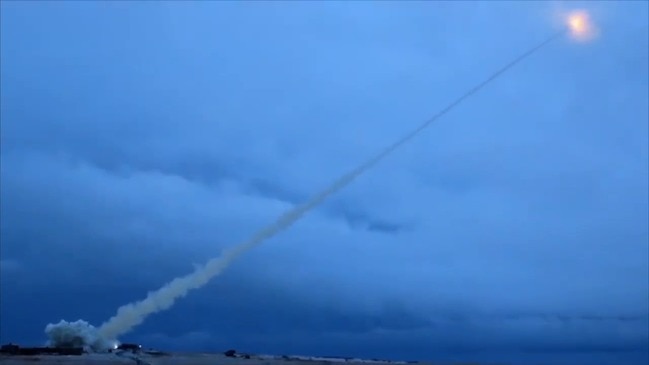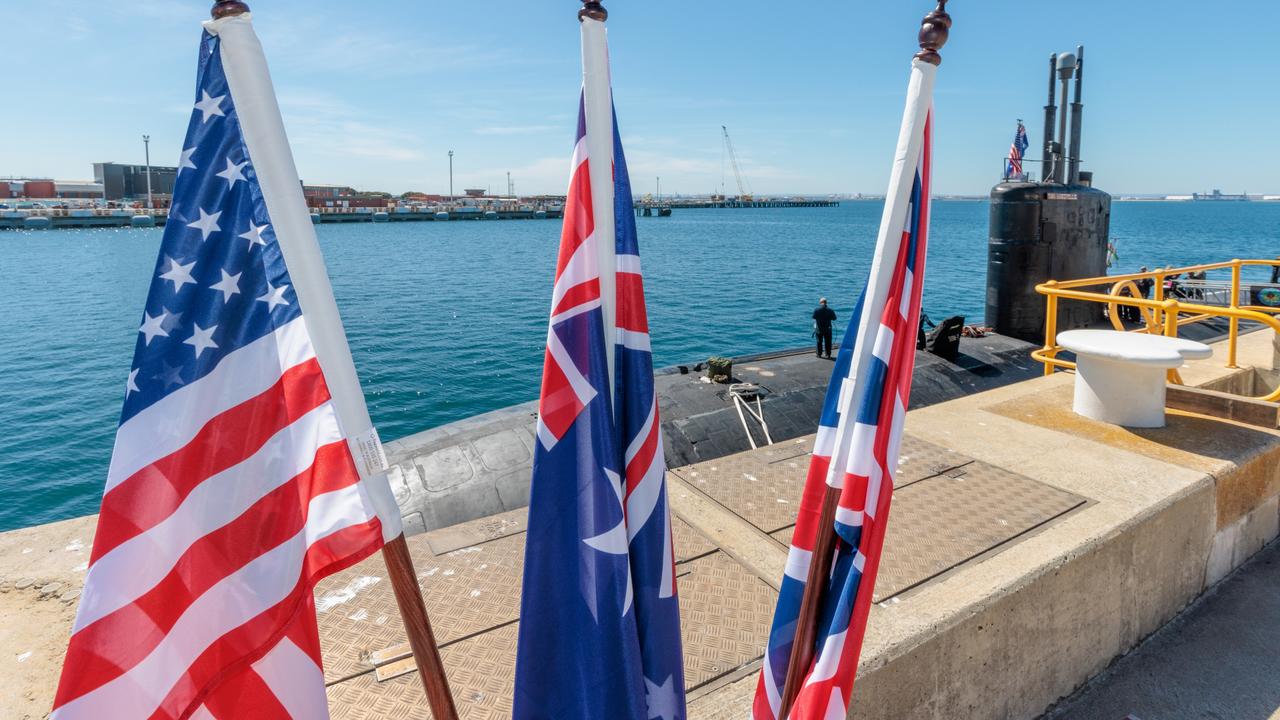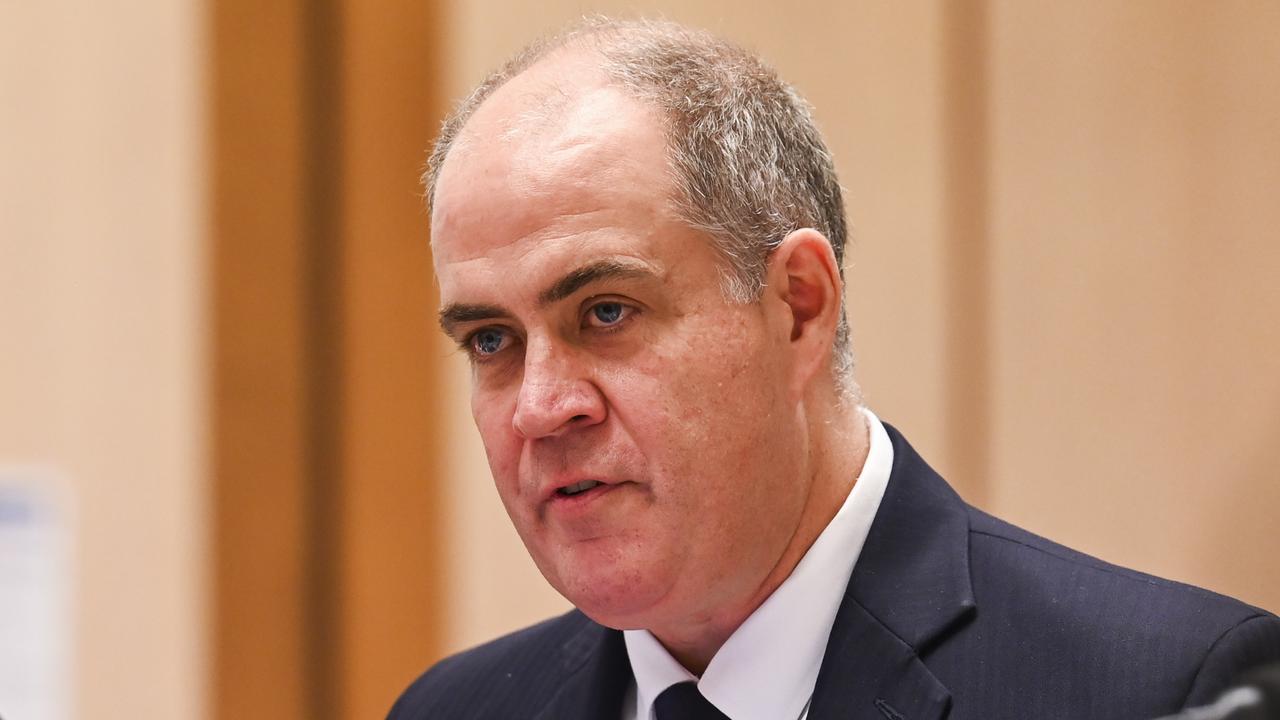‘Dirty bomb’: Mystery Russian ‘superweapon’ kills five
An explosion in Russia has been played down by officials — but now they’ve been forced to admit people have died and many more are at risk.

When an experimental missile exploded at a secret Russian base, things were immediately odd. Children from the nearby city of Severodvinsk were sent home from school. Its 185,000 residents were told to stay indoors. Doses of Iodine were distributed. All shipping was barred from the area for at least 30 days.
What could cause such a reaction?
How could a relatively small explosion cause such confusion?
Russia’s nuclear energy agency Rosatom eventually stepped forward: It explained that a missile testing an “isotope power source for a liquid-fuelled rocket engine” had misfired.
Rosatom conceded the accident on Thursday night had killed five, and three were being treated for burns.
Russian officials said elite scientists Alexey Vyushin, Yevgeny Koratayev, Vyacheslave Lipshev, Sergey Pichugin and Vladislav Yanovsky were killed during tests on a liquid propulsion system.
Overnight the death toll rose to seven.
“The death of our staff members is a bitter loss for the nuclear centre and the Rosatom state corporation. The researchers are national heroes,” the institute’s scientific director Vyacheslav Solovyev said. “They were the elite of the Russian federal nuclear centre and sometimes they were carrying out tests in extremely difficult conditions.”
#ÐрхангельÑк прÑмо ÑейчаÑ. Ранее в регионе произошел взрыв на военной базе, а ÑкÑтренные Ñлужбы отметили превышение ÑƒÑ€Ð¾Ð²Ð½Ñ Ñ€Ð°Ð´Ð¸Ð°Ñ†Ð¸Ð¸. Теперь больных привозÑÑ‚ в коÑтюмах радиационной защиты via #Telegram #Mash pic.twitter.com/RUKgujx5tU
— ÐÐО Беллона (@Bellona_murman) August 8, 2019
Little else is officially known but military analysts have been speculating. Was it some sort of “dirty bomb”, with a radioactive warhead?
Could it have been a failed launch from a nuclear-powered submarine?
Suspicion has also fallen on one of President Vladimir Putin’s vaunted new “superweapons”.
A new Rosatom statement offers some detail on the event: “The rocket tests were carried out on the offshore platform ... After the tests were completed, the rocket fuel ignited, followed by detonation. After the explosion, several employees were thrown into the sea.”
STORMY PETREL
The idea of using a nuclear-reactor powered ramjet isn’t new
It appears to have been thought up by Nazi rocket scientists during the dying days of World War II. With the fall of Berlin, these experts were divided up between the United States and the Soviet Union.
Both nations embarked upon experimental nuclear-powered missile projects in the 1950s. It was quickly recognised the radiation-spewing technology was far too perilous to be practical.
But a boisterous President Putin revealed what he called the 9M730 Burevestnik (Petrel) early last year as one of six new “superweapons”. NATO calls it the SSC-X-9 “Skyfall”.
“Since its range is unlimited, it can manoeuvre as long as you want. No one in the world has anything like that,” Mr Putin boasted. “It may appear some day, but by that time we will develop something new.”
The accompanying presentation showed the missile weaving its way between radar stations in the mid-Atlantic, passing around South America’s Cape Horn and worming its way up towards Hawaii.
Mr Putin said the missile was successfully tested in late 2017 and was “invincible against all existing and prospective missile defence and counter-air defence systems”.
“I want to tell all those who have fuelled the arms race over the last 15 years, sought to win unilateral advantages over Russia, introduced unlawful sanctions aimed to contain our country’s development: Aall that you wanted to impede with your policies have already happened,” Mr Putin declared. “You have failed to contain Russia.”
But things don’t appear to be going to plan.
EXPLOSIVE POTENTIAL
Nuclear propulsion is promising — but also problematic.
An on-board reactor would give an engine almost unlimited range. In the case of a guided cruise missile, it could circle the world before receiving orders to attack from out of the blue.
But they’re not easy to control.
They operate at extremely high temperatures. They use explosive fuels, such as liquid hydrogen. And any accident could have devastating, long-lasting effects.
Such as is the case at Severodvinsk.
And there is little margin for error.
Booster rockets are needed to accelerate the missile to very high speeds. This is necessary for the high rate of airflow required to start the ramjet engine.
Such high-velocity boosting needs extremely volatile fuels.

Once the fast-moving air begins to flow over the super-hot reactor, it expands and squirts out the exhaust nozzle as thrust.
But that super-hot reactor must be close to the volatile fuels needed to get the missile up to speed.
It’s a deadly mix.
But the Kremlin has taken a risk: It believes the benefits of such a weapon outweigh the risk.
Last year, US intelligence agencies reported the Petrel was having trouble flying.
In the period up to May 2018, it said four test flights had failed.
The most successful flight only lasted two minutes, covering 35km before plunging into the ground.
President Putin’s personal spokesman Dmitry Peskov dismissed the reports as propaganda: “Listen to the President of Russia Vladimir Putin and believe him,” he said.
Now the Kremlin has a radioactive cloud to explain.
FALLOUT
“The tragedy happened while working with the engineering and technical support of the isotope power source in a liquid propulsion system,” Rosatom stated. “Five employees … were killed while testing a liquid propulsion system. Three of our colleagues received injuries and burns of varying severity.”
The Barents Observer publication reports two may have been sent to the specialist radiation exposure unit at the Burnasyan Federal Medical Biophysical Centre in Moscow.
Люди в коÑтюмах радиационной защиты измерÑли фон вертолета. Когда убедилиÑÑŒ, что коптер не излучает и вÑе в норме — приÑтупили к выгрузке раненных. pic.twitter.com/LmoTm2yiJp
— ÐÐО Беллона (@Bellona_murman) August 8, 2019
Initially, Russian authorities had said only two had been killed.
Russia’s Defence Ministry said no harmful chemicals were released and that radiation levels were unchanged. But authorities in Severodvinsk contradicted this, stating that a “brief spike” in radiation was detected.
The Nuclear Safety Institute of the Russian Academy of Science published sensor data claiming background radiation levels rose 20 times above normal — though still within acceptable limits.
Russian media has speculated the explosion could have happened at a naval ballistic and cruise missile testing facility near the village of Nyonoksa, some 20km west of Severodvinsk.
“Two microsieverts per hour in Severodvinsk might mean that the levels at the location of the incident, which is tens of kilometres from Severodvinsk, were even higher, and this increase might mean that beta and alpha radionuclides were released into the atmosphere,” senior nuclear campaigner with Greenpeace Russia, Rashid Alimov, told the Barents Observer.
Norway’s Radiation and Nuclear Safety Authority (DSA) issued a press release stating no increase in radiation had been detected in its territory.
OPEN SOURCE INTELLIGENCE
Why would such a risky experimental weapon be tested so close to densely populated areas?
Or did it detonate while being transported?
“Nyonoksa is well known for testing naval ballistic missile engines and cruise missiles of various types. There are, however, no logical reasons for any such missiles to have a source of radioactivity,” the Barents Observer notes.
Unless it was a nuclear-powered missile.
An August 8 image from @planetlabs showing the Serebryanka, a nuclear fuel carrier, near a missile test site in Russia, where an explosion and fire broke out earlier. The ship's presence may be related to the testing of a nuclear-powered cruise missile. pic.twitter.com/QhdxuDC91w
— Jeffrey Lewis (@ArmsControlWonk) August 9, 2019
Online satellite photo analysts have noted a nuclear-fuel carrier vessel, the Serebryanka, remains at anchor a few kilometres offshore from the Nyonoksa facility.
The Serebryanka has previously been seen in the vicinity of a test of the Burevestnik nuclear-powered cruise missile in November 2017. That missile crashed at in the Arctic Circle, sparking an urgent recovery effort.
“You don’t need this ship for conventional missile tests … You need it when you recover a nuclear propulsion unit from the sea floor,” Jeffrey Lewis, director of the East Asia Non-Proliferation Program at the Middlebury Institute of International Studies, told Reuters.
Many facilities at the Nenoksa test site were dismantled or left to themselves. But since Oct 2018, a new construction has been erected which resemble facilities seen at Pankovo or Kapustin Yar used to test e.g. 9M730 "Burevestnik".
— tamydoolittle (@border9999) June 14, 2019
Probably related to 3M22 Zircon... pic.twitter.com/9QiKGfGIVA
He believes testing of the Petrel has been moved to the Nyonoksa site.
Russia appears to have dismantled a facility for the nuclear-powered cruise missile at Novaya Zemlya and moved it to near Nyonoksa to put it out of the range of US surveillance aircraft.
Jamie Seidel is a freelance writer. Continue the conversation @JamieSeidel



